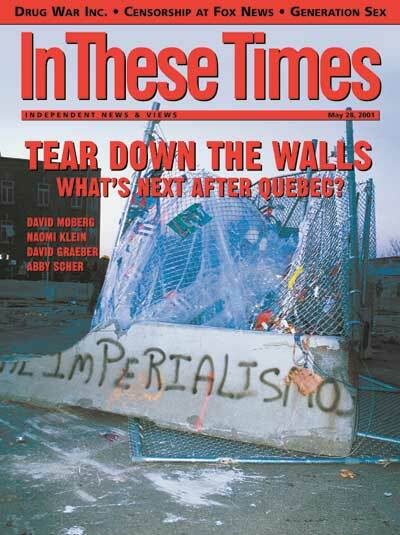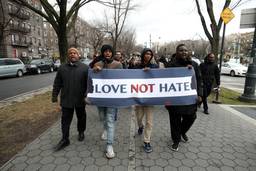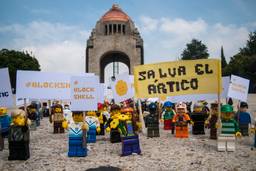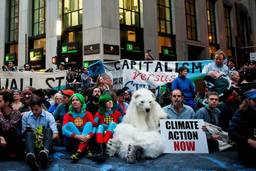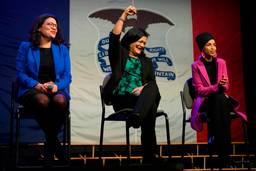Maude Barlow, chairwoman of the Council of Canadians, is condemned for not calling off “Maude’s Mob.” Activist Jaggi Singh is in jail for allegedly possessing a weapon that he never owned or used – a theatrical catapult that shot stuffed animals over the infamous fence in Quebec City during the Summit of the Americas.
It’s not just that the police didn’t get the joke, it’s that they don’t get the new era of political protest, one adapted to our postmodern times. There was no one person or group who could call off “their people,” because the tens of thousands who came out to protest the Free Trade Area of the Americas are part of a movement that doesn’t have a leader, a center, or even an agreed-upon name. Yet undeniably, it exists nonetheless.
What is difficult to convey in media reports is that there weren’t two protests that took place in Quebec City – one a “peaceful” labor march, the other a “violent” anarchist riot. There were hundreds of protests. One was organized by a mother and daughter from Montreal. Another by a van load of grad students from Edmonton. Another by three friends from Toronto who aren’t members of anything but their health clubs. Yet another by a couple of waiters from a local café on their lunch break.
Sure there were well organized groups in Quebec City: The unions had buses, matching placards and a parade route; the “black bloc” of anarchists had gas masks and radio links. But for days the streets also were filled with people who simply said to a friend, “Let’s go to Quebec,” and with Quebec City residents who said, “Let’s go outside.” They didn’t join one big protest, they participated in a moment. How could it be otherwise?
The traditional institutions that once organized citizens into neat, structured groups are all in decline: unions, religions, political parties. Yet something propelled tens of thousands of individuals to the streets anyway, an intuition, a gut instinct – perhaps just the profoundly human desire to be part of something larger than oneself.
Did they have their party-line together, a detailed dissection of the ins-and-outs of the FTAA? Not always. But neither can the Quebec protests be dismissed as vacuous political tourism. George W. Bush’s message at the summit was that the mere act of buying and selling would do our governing for us. “Trade helps spread freedom,” he said.
It was precisely this impoverished and passive vision of democracy that was rejected on the streets outside. Whatever else they were searching for, all were certainly looking for a taste of direct political participation. The result of these hundreds of miniature protests converging was chaotic, sometimes awful, but frequently inspiring. One thing is certain: After at last shaking off the mantle of political spectatorship, the last thing these people are about to do is hand over the reins to a cabal of would-be leaders.
The protesters will, however, become more organized, a fact which has more to do with the actions of police than the directives of Maude Barlow, Jaggi Singh or, for that matter, me. If people wandered and stumbled to Quebec City, profoundly unsure of what it meant to be part of a political movement, something united us all once we arrived: mass arrests, rubber bullets, but most of all, a thick white blanket of gas.
Despite Canada’s Liberal Party line of praising “good” protesters while condemning “bad” ones, treatment of everyone on the streets of Quebec City was crude, cowardly and indiscriminate. The security forces used the actions of a few rock throwers as a camera-friendly justification to do what they have been trying to do from the start: clear the city of thousands of lawful protesters because it was more convenient that way.
Once they got their “provocation,” they filled entire neighborhoods with toxic fumes, forcing families to breathe through masks in their living rooms. Frustrated that the wind was against them, they sprayed some more. People giving the peace sign to the police were gassed. People handling our food were gassed. I met a 50-year-old woman from Ottawa who told me cheerfully, “I went out to buy a sandwich and was gassed twice.” People having a party under a bridge were gassed. People protesting their friends’ arrests were gassed. The first-aid clinic treating people who had been gassed, was gassed.
Tear gas was supposed to break-down the protesters, but it had the opposite effect: It enraged and radicalized them enough to cheer for “Black Blockers” who dared to throw the canisters back. It may be light and atomized enough to ride on air, but I suspect the coming months will show that gas also has powerful bonding properties.

I hope you found this article important. Before you leave, I want to ask you to consider supporting our work with a donation. In These Times needs readers like you to help sustain our mission. We don’t depend on—or want—corporate advertising or deep-pocketed billionaires to fund our journalism. We’re supported by you, the reader, so we can focus on covering the issues that matter most to the progressive movement without fear or compromise.
Our work isn’t hidden behind a paywall because of people like you who support our journalism. We want to keep it that way. If you value the work we do and the movements we cover, please consider donating to In These Times.
Naomi Klein is a former columnist for In These Times. She is the author of No Logo: Taking Aim at the Brand Bullies, Fences and Windows: Dispatches from the Front Lines of the Globalization Debate and The Shock Doctrine: The Rise of Disaster Capitalism.
